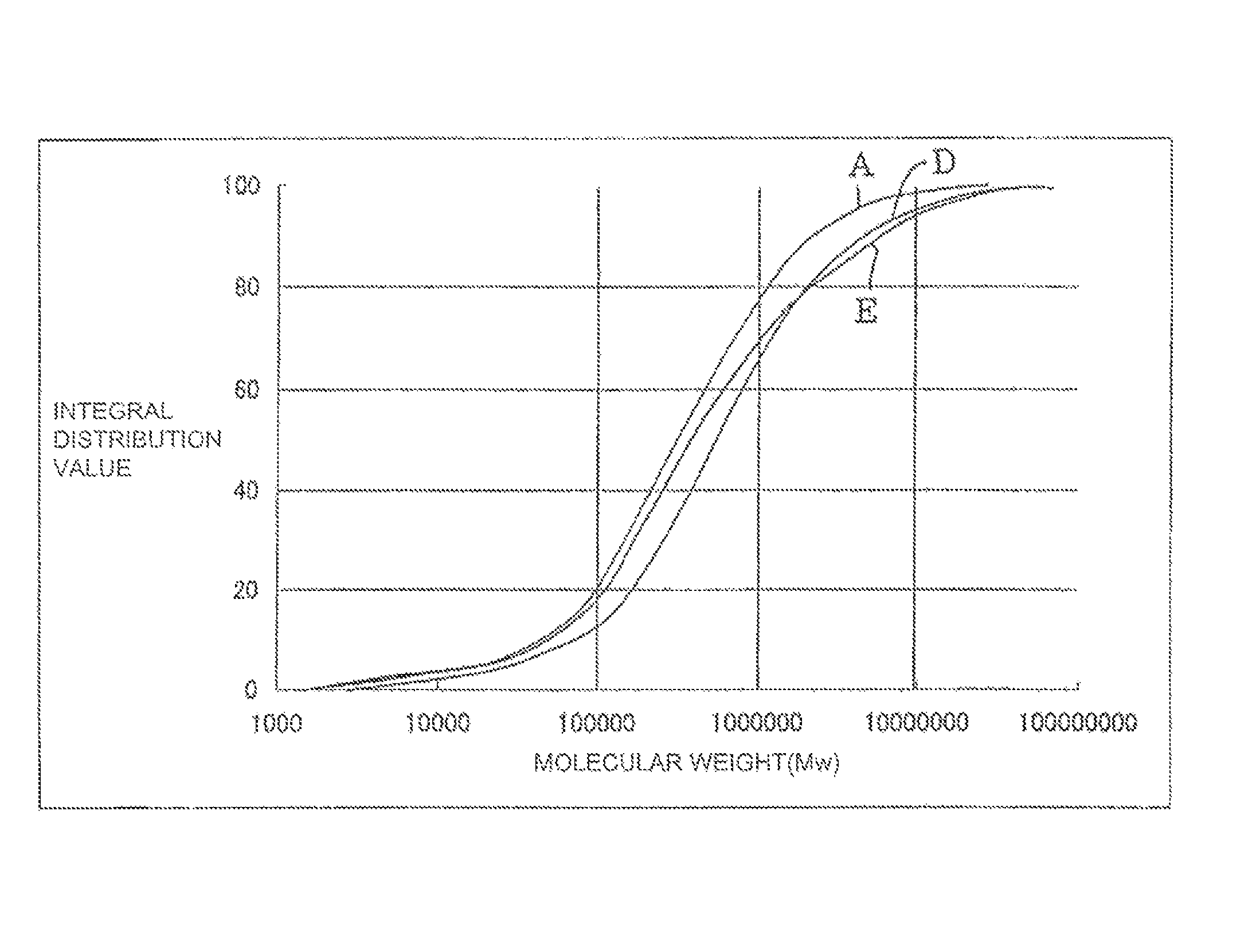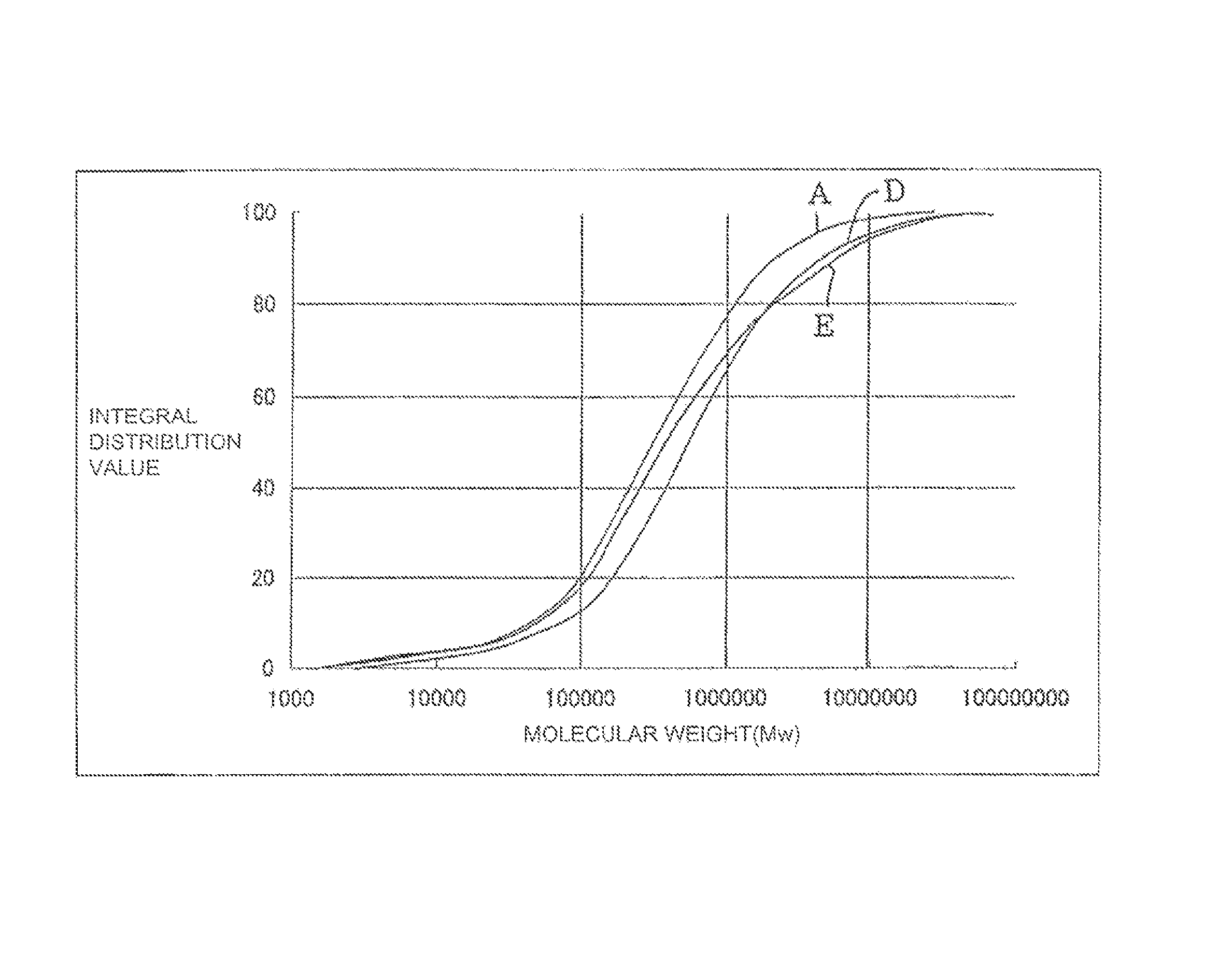Method of producing honeycomb structure
a honeycomb structure and honeycomb technology, applied in the field of honeycomb structure production, can solve the problems of reducing production efficiency and work efficiency, large honeycomb structure tending to produce cracks, and undergoing so as to prevent the contamination of the dryer due to the low-molecular-weight components, suppress the variation in dimensional accuracy or the like, and increase the amount of combustion heat
- Summary
- Abstract
- Description
- Claims
- Application Information
AI Technical Summary
Benefits of technology
Problems solved by technology
Method used
Image
Examples
example 1
[0061]A cordierite-forming raw material was prepared as a ceramic raw material including ceramic material using talc (40 mass %), kaolin (17 mass %), calcined kaolin (23 mass %), silica (1 mass %), alumina (10 mass %), and aluminum hydroxide (8 mass %) so that the content of SiO2 was 42 to 56 mass %, and preferably 47 to 53 mass %, the content of Al2O3 was 30 to 45 mass %, and preferably 32 to 38 mass %, and the content of MgO was 12 to 16 mass %, and preferably 12.5 to 15 mass %, based on the theoretical cordierite composition (2MgO.2Al2O3.5SiO2).
[0062]As a binder, methyl cellulose (MC) having a weight average molecular weight (Mw) of 4,100,000 and a viscosity (2% aqueous solution) at 20° C. of 6000 mPa·s, and having an integral molecular weight distribution value of components having a molecular weight of 100,000 or less in the integral molecular weight distribution curve of 14 (C in Table 1), was added to the cordierite-forming raw material in an amount of 4 mass % (Example 1 in ...
example 2
[0065]A cordierite-forming raw material was prepared in the same manner as in Example 1. As a binder, methyl cellulose (MC) having a weight average molecular weight (Mw) of 4,500,000 and a viscosity (2% aqueous solution) at 20° C. of 8000 mPa·s, and having an integral molecular weight distribution value of components having a molecular weight of 100,000 or less in the integral molecular weight distribution curve of 13 (D in Table 1), was added to the cordierite-forming raw material in an amount of 4 mass % (Example 2 in Table 2). The dispersion medium, the pore-forming material, and the surfactant were added in the same manner as in Example 1. A ceramic clay that was plasticized to allow extrusion was prepared, mixed, kneaded, deaired, and extruded to obtain an undried honeycomb formed body in the same manner as in Example 1. The undried honeycomb formed body was dried using a dielectric dryer in the same manner as in Example 1 to obtain a dried honeycomb formed body having a length...
example 3
[0066]A cordierite-forming raw material was prepared in the same manner as in Example 1. As a binder, methyl cellulose (MC) having a weight average molecular weight (Mw) of 4,900,000 and a viscosity (2% aqueous solution) at 20° C. of 11,000 mPa·s, and having an integral molecular weight distribution value of components having a molecular weight of 100,000 or less in the integral molecular weight distribution curve of 12 (F in Table 1), was added to the cordierite-forming raw material in an amount of 4 mass % (Example 3 in Table 2). The dispersion medium, the pore-forming material, and the surfactant in the same manner as in Example 1 were added. A ceramic clay that was plasticized to allow extrusion was prepares, mixed, kneaded, deaired, and extruded to obtain an undried honeycomb formed body in the same manner as in Example 1. The undried honeycomb formed body was dried using a dielectric dryer in the same manner as in Example 1 to obtain a dried honeycomb formed body having a leng...
PUM
| Property | Measurement | Unit |
|---|---|---|
| molecular weight distribution | aaaaa | aaaaa |
| molecular weight distribution | aaaaa | aaaaa |
| molecular weight distribution | aaaaa | aaaaa |
Abstract
Description
Claims
Application Information
 Login to View More
Login to View More - R&D
- Intellectual Property
- Life Sciences
- Materials
- Tech Scout
- Unparalleled Data Quality
- Higher Quality Content
- 60% Fewer Hallucinations
Browse by: Latest US Patents, China's latest patents, Technical Efficacy Thesaurus, Application Domain, Technology Topic, Popular Technical Reports.
© 2025 PatSnap. All rights reserved.Legal|Privacy policy|Modern Slavery Act Transparency Statement|Sitemap|About US| Contact US: help@patsnap.com


